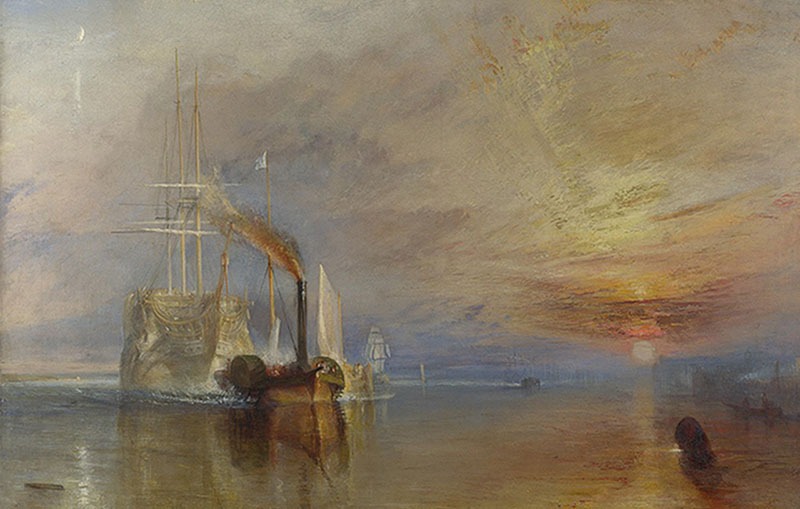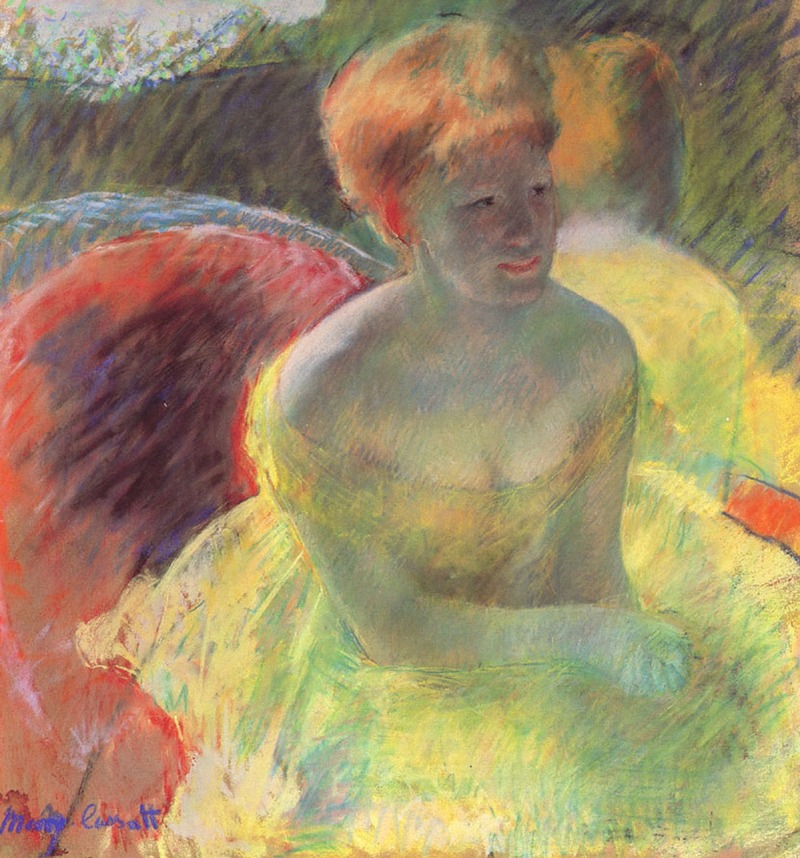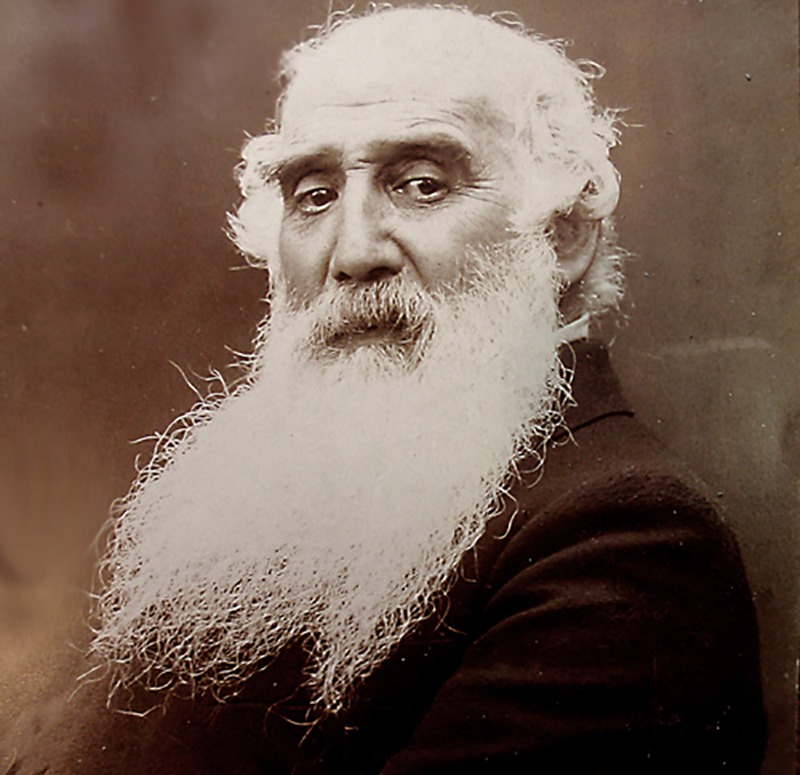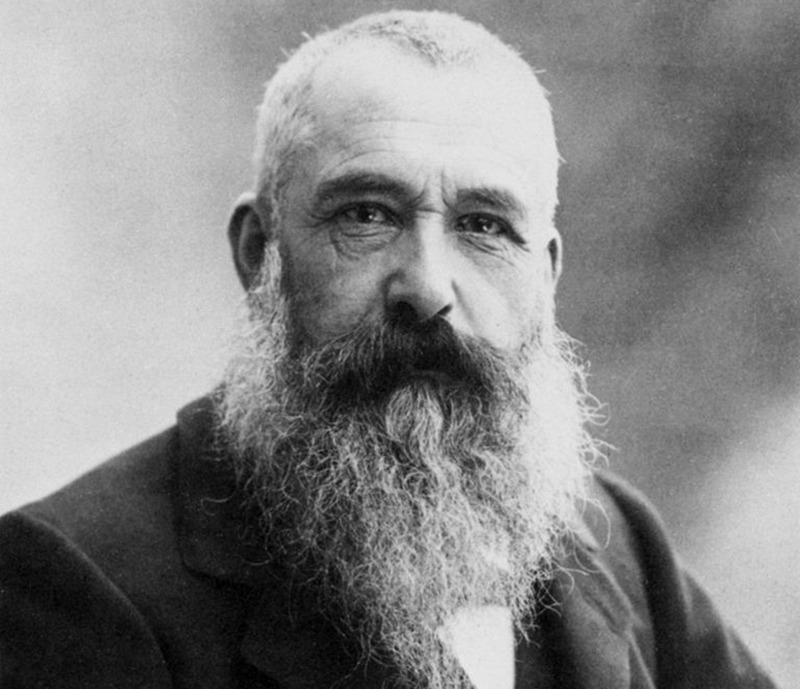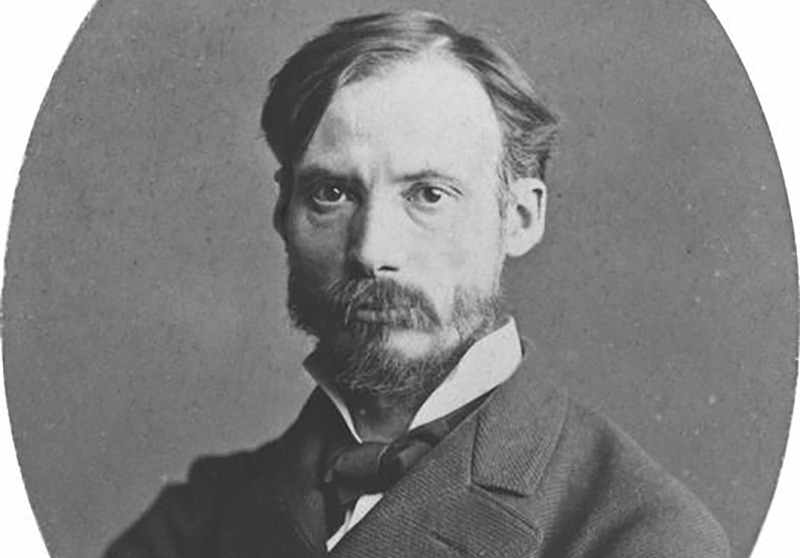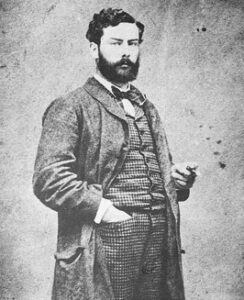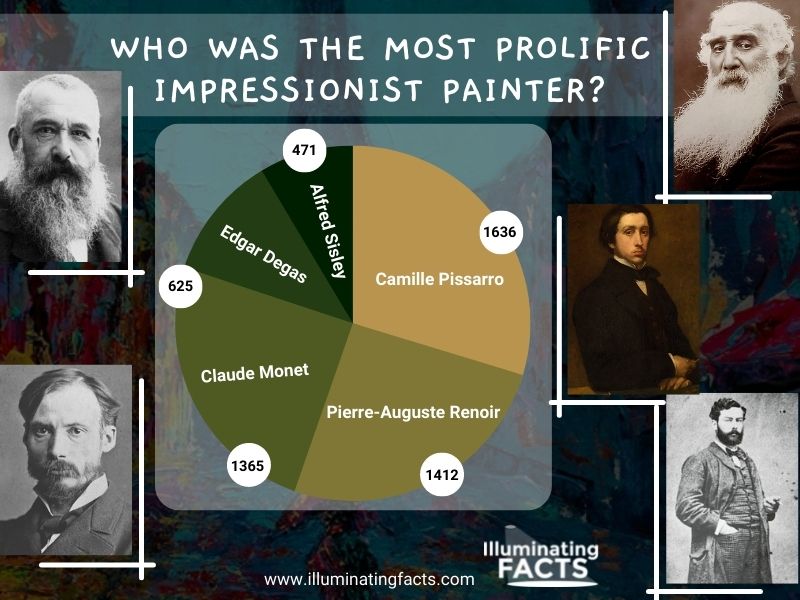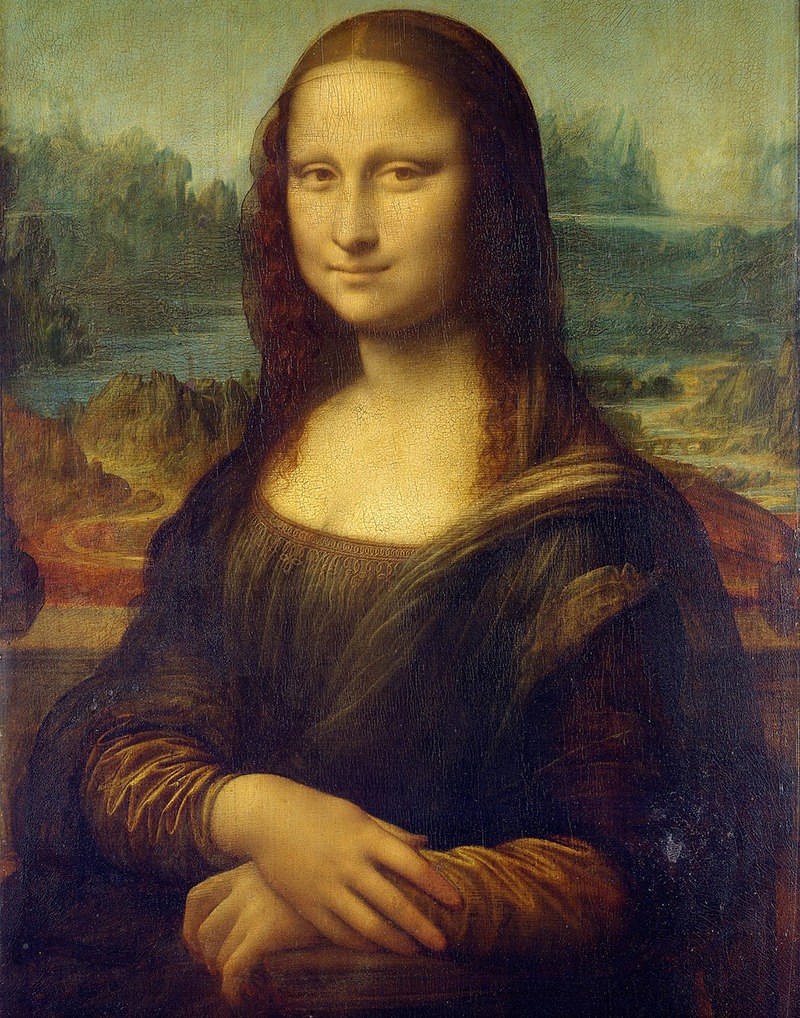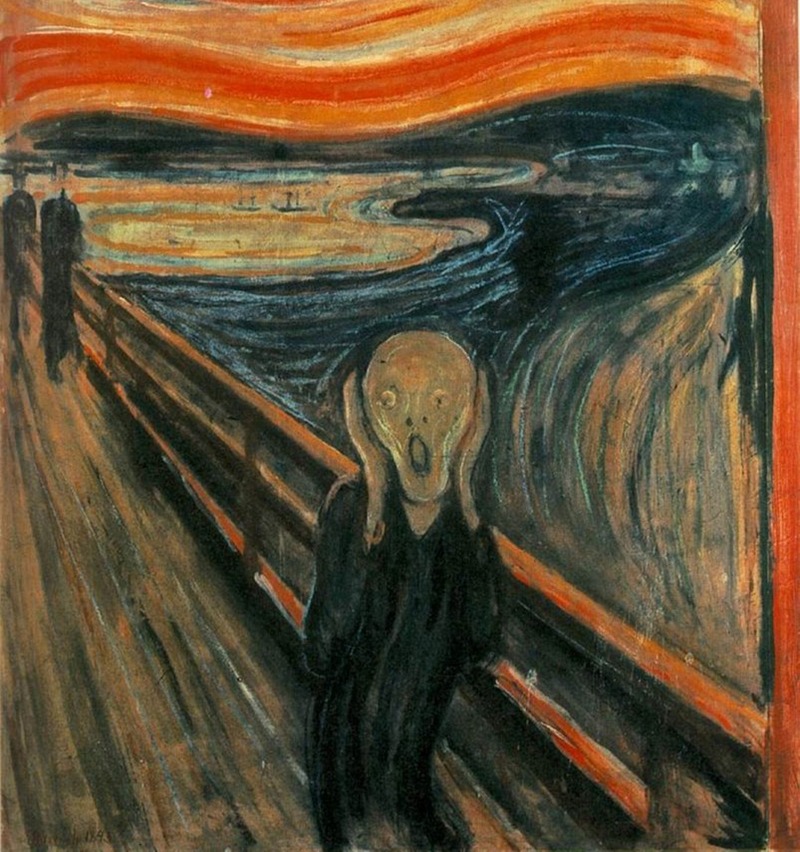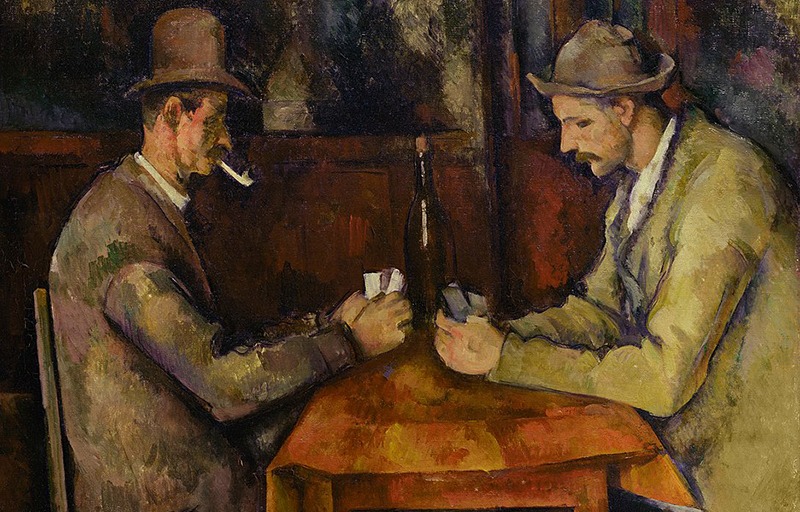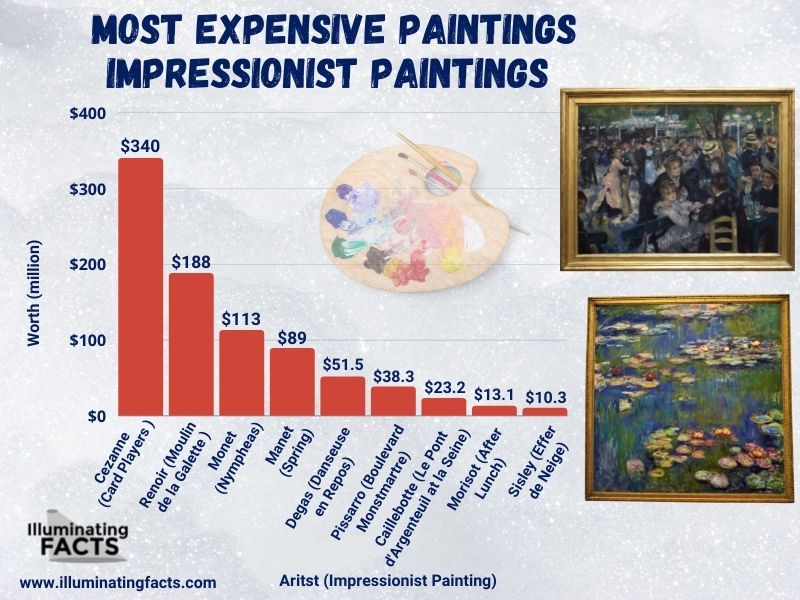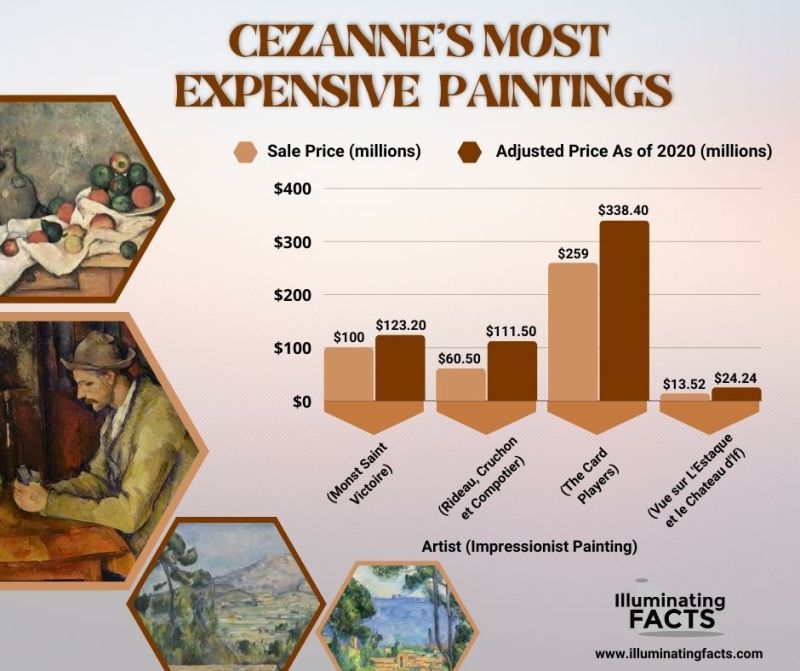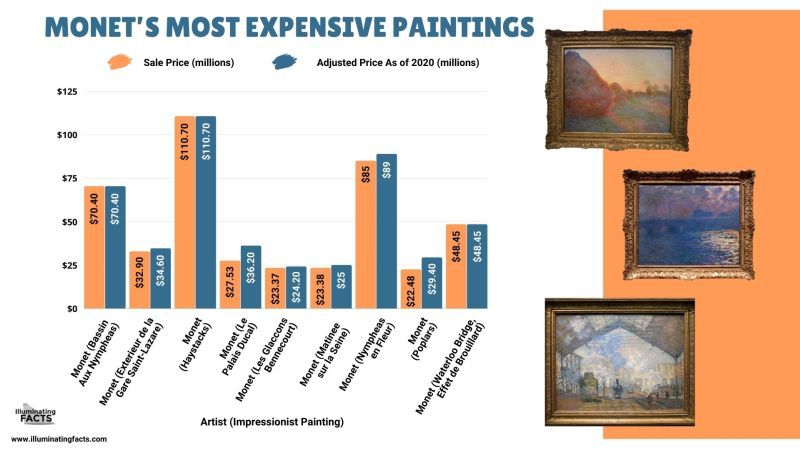Impressionism is a 19th-century artistic movement characterized by relatively thin and small but visible strokes. Open composition, an emphasis on the precise representation of light in changing qualities, often accentuates the effects of the time. On the other hand, unusual visual angles and ordinary themes are the inclusion of the impressionist movement. This movement is a crucial part of human perception and experience. Impressionism was born out of a group of Parisian artists whose independent exhibitions got known in the 1870s and 1880s.
The impressionists faced stiff opposition from the traditional artistic community in France. The impressionist’s name comes from the title of a work by Claude Monet such as Impression, Soleil Levante. It prompted the critic Louis Leroy to invent the term in a satirical review published in the Parisian newspaper named Le Charivari. The development of Impressionism in the visual arts was quickly followed by the analogous styles in media such as literature and music.
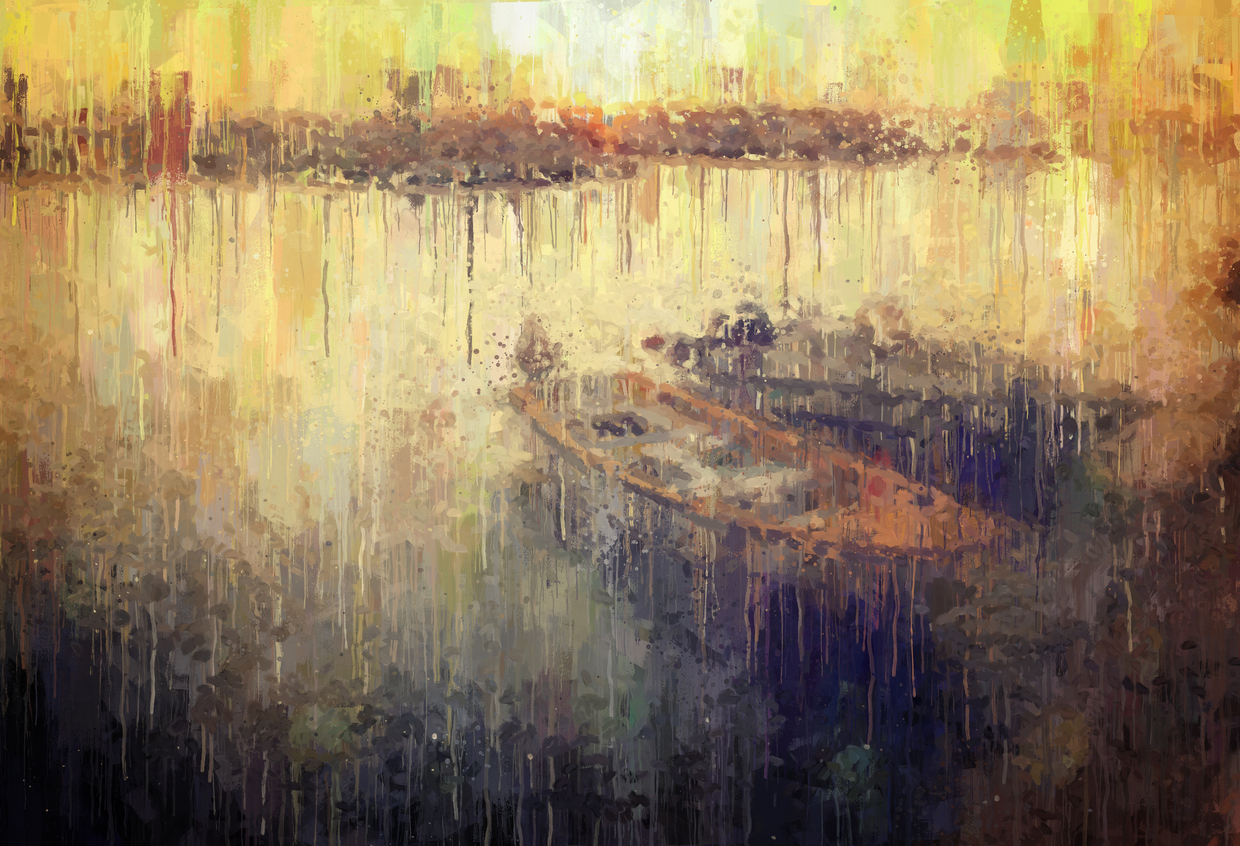
Boats on dock impressionist painting
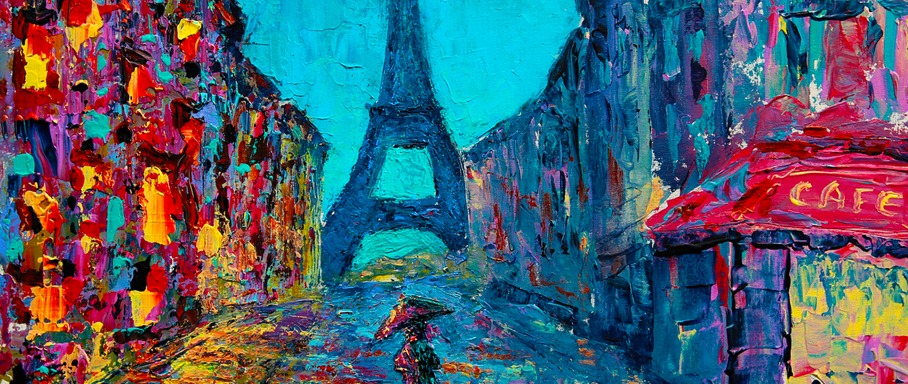
Paris Street impressionist painting
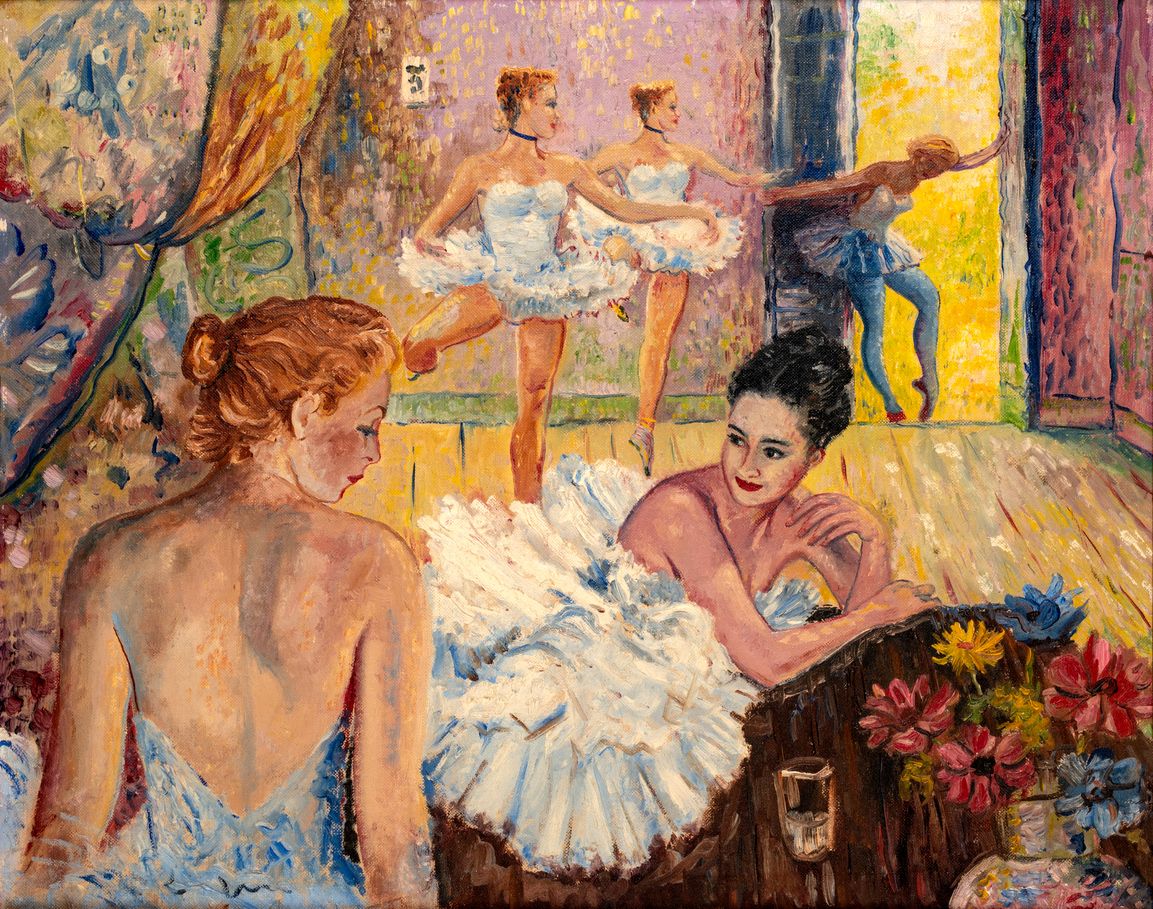
Young Ballerinas in Dance Studio Painting
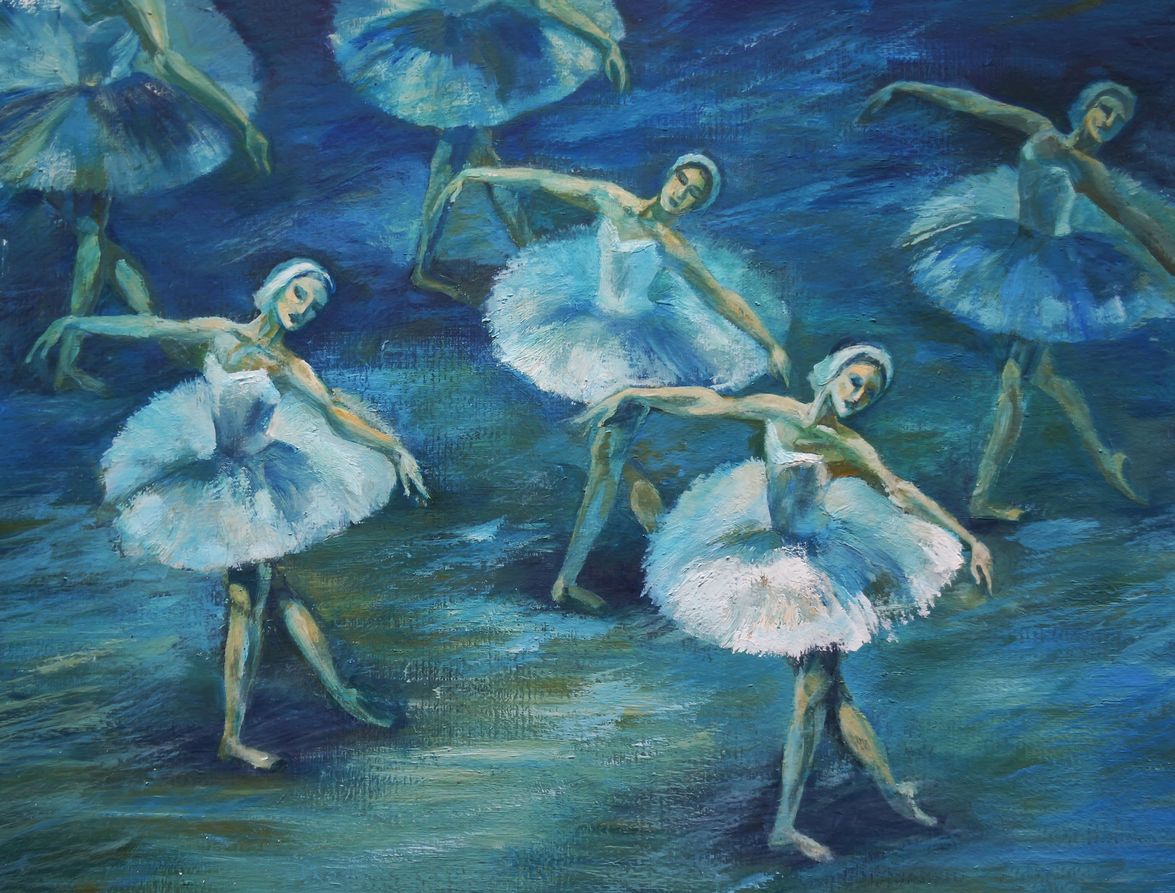
Swan Lake ballet Painting Acrylic and Full spectrum on Cardboard
History
source: J. M. W. Turner, Public domain, via Wikimedia Commons
In the mid-19th century, a time of change as Emperor Napoleon III rebuilt Paris, he waged a war that resulted in the Académie des Beaux-Arts dominating French art. The academy was the curator of the content and style standards of traditional French painting. Religious subjects, historical subjects, and portraits were valued, whereas life and landscape were not. The academy preferred the finished images that appeared lifelike when examined closely[1].
Paintings in this style consisted of precise brushstrokes that were carefully blended to hide the hand of the artist in the work. The golden varnish was used to restrict the color and often to further attenuate. The academy hosted an annual jury-rigged art exhibition, the Salon de Paris. The artists whose work was featured in the exhibition won awards. Also, they received commissions that improved the reputation of their work.
The standards of the judgment represented the values of the Academy as it was represented by the works of artists such as Alexandre Cabanel and Jean-Léon Gérôme.
Gustav’s Realism
In the early 1860s, the four young painters, Frédéric Bazille, Alfred Sisley, Pierre-Auguste Renoir, and Claude Monet, met each other while studying with the academic artist Charles Gleyre. They discovered that they shared an interest in painting contemporary life and landscapes rather than mythological and historical scenes. Following a practice became popular in the middle of the century[2].
Often, these painters, also known as impressionists, ventured out into the fields together to paint in the open air. It was not to sketch carefully the finished works in the studio as was the custom. By painting in the sun directly from nature and boldly using vivid synthetic pigments, they began to develop a brighter and lighter way of painting. It extended the Realism of the Barbizon and Courbet schools.
A privileged meeting place for the artists was the Café Guerbois on the Avenue de Clichy in Paris. It was the place where discussions were often led by Edouard Manet and he was admired by the young artists. Soon, they were joined by Armand Guillaumin, Paul Cézanne, and Camille Pissarro[3].
Why Was Manet’s Lunch On Grass Rejected?
source: Édouard Manet, Public domain, via Wikimedia Commons
During the 1860s, most of the work submitted by Monet and his friends in favor of works by artists faithful to the approved style was rejected by the Salon Jury. In 1863, the Salon Jury rejected Lunch on the Grass by Manet. It was because it depicted a naked woman with two dressed men at a picnic. On the other hand, the Salon Jury accepted the nudes in allegorical and historical paintings[4].
Foundation of Salon des Refusés
In a contemporary setting, it condemned Manet for placing the realistic nude. The admirers of the Manet were horrified by the harsh rejection by the Jury. Also, the unusual number of works rejected in the same year bothered many French Artists. After Emperor Napoleon III decreed that the public would be allowed to judge the work for themselves. It was done after he looked at the rejected works of 1863. As a result, Salon des Refusés was organized[5].
On the other hand, many spectators came there for laughs. Salon des Refusés drew attention to the existence of the new art practices and more visitors were attracted there than to the regular Salon.
Foundation of Société Anonyme Coopérative des Artistes Peintres, Sculpteurs, Graveurs
There was a new request by the artists in 1867 and 1872 for Salon des Refusés was refused. In December 1873, Edgar Degas, Berthe Morisot, Cézanne, Sisley, Pissarro, Renoir, Monet, and several other impressionist painters founded the Société Anonyme Coopérative des Artistes Peintres, Sculpteurs, Graveurs. When translated to English, it means Cooperative and Anonymous Association of Painters, Sculptors, and Engravers.
This association was formed to display the work independently without any restrictions. As a result, the members of the association were expected to resign from participating in the Salon. In the inaugural exhibition, several other artists were invited to join the other artists. Out of all the other artists, Major Eugene Boudin is a prominent one. It is because he persuaded Monet to adopt the Plein air painting.
Another painter who had a great influence on Monet and his friends is Johan Jongkind. But he did not participate in the inaugural exhibition along with Edouard Manet. The first exhibition held by the association in April 1874 was joined by nearly thirty artists. It was held in the studio of photographer Nadar.
Impressionist Techniques
Among the French painters who paved the way for impressionism were the romantic colorist Eugène Delacroix, the leader of Gustave Courbet’s realists, and the painters of the Barbizon school like Théodore Rousseau. The impressionists learned a lot from the work of Johan Barthold Jongkind, Eugène Boudin, and Jean-Baptiste-Camille Corot, who painted from nature in a spontaneous and direct style that foreshadowed impressionism. Also, they became friends and advised the younger artists.
Several identifiable working habits and techniques contributed to the innovative style of the impressionists. These methods were used by the previous artists and often feature prominently in the work such as JMW Turner, John Constable, Peter Paul Rubens, Diego Velazquez, and Frans Hals. These artists were the first impressionists to use them with consistency.
The impressionist techniques are as follows:
- Short and thick strokes of paint quickly capture the essence of the subject rather than its details. Hence, the paint is often applied in impasto.
- The colors are applied side by side with as little mixing as possible. It is a technique that exploits the principle of simultaneous contrast to make the color more vivid for the viewer.
- By mixing the complementary colors, grays and dark tones are produced. Pure impressionism avoids the use of black paint.
- Wet paint is placed into the wet paint without waiting for the successive application to dry. It results in better color mixing and smoother edges.
- The transparency of thin layers of paint, especially enamels, is not exploited by impressionist paintings. The earlier artists were careful to manipulate the effects of the paints. The surface of the impressionist painting is generally opaque.
- Previously, painters used dark gray or colorful backgrounds but impressionist painters use white or light-colored backgrounds.
- The play of natural light was highlighted by the impressionist painters. Also, great attention is paid to the reflection of the colors from one object to another. On the other hand, painters often worked at night to produce evening effects, the dismal effects of twilight or afternoon.
- The paintings are done in the open air such as outdoors or in fields, the shadows are boldly painted with the blue of the sky as it reflects the surfaces. It gives a feeling of freshness that was not previously depicted by the artists. The blue shadow on the snow inspired this technique.
New Impressionist Techniques
source: Mary Cassatt, Public domain, via Wikimedia Commons
New technologies have played a role in the development of the style. The impressionists took advantage of the mid-century introduction of the premixed paints in the tin tubes which looked like modern toothpaste tubes. It allowed the artists to work more spontaneously such as indoors or outdoors. Previously, paints were made individually by painters. They used to grind and mix the dry powder pigments with linseed oil and store them in animal bladders.
During the 19th century, many vivid synthetic pigments were commercially available to artists. These colors were synthetic ultramarine blue, cadmium yellow, viridian, and cobalt blue which were used before impressionism in the 1840s. The impressionist’s way of painting is to make bold use of pigments even with more recent colors such as cerulean blue. This color was commercially available to artists in the 1860s[6].
The progress of the impressionists toward a brighter painting is gradual. During the 1860s, Renoir and Monet sometimes painted on canvases prepared with the traditional gray or red-brown background. In the 1870s, Pissarro, Renoir, and Monet generally chose to paint based on a light beige or gray color. It functioned as a medium tone in the impressionist paintings.
By the 1880s, some impressionists preferred slightly off-white or white backgrounds. Also, the background color played a significant role in the finished painting.
Famous Impressionist Artists
How Many Famous Impressionist Painters Were There?
In the middle of the 19th century, Impressionism appeared in France. Although initially criticized, it quickly gained popularity. Over time, it spawned similar movements in literature and music. Today, impressionism is considered one of the most influential movements in modern art. There have been various facts about the famous impressionist painters, but how many were there? The fact is that there were more than 10 famous impressionist painters with different early and impressionist life. Their masterpiece makes them famous across the globe with a different history, rewards, worth, etc.
Camille Pissarro (1830 – 1903)
source: Unknown author unknown author, Public domain, via Wikimedia Commons
Camille Pissarro was a Danish-French Impressionist and Neo-Impressionist painter. He was born on the island of Saint Thomas. His significance lies in its contribution to both Impressionism and Post-Impressionism. He studied with great pioneers such as Jean-Baptiste-Camille Corot and Gustave Courbet. Later on, he studied and worked with Paul Signac and Georges Seurat where he adopted the neo-impressionist style at the age of 54.
Early Life
Pissarro arrived in time to see the contemporary art on display at the Universal Exhibition in Paris. He was strongly drawn to the paintings of Camille Corot. In 1856, he began to take private lessons at the École des Beaux-Arts. Later on, he registered as a copyist at the Louvre in 1861. Also, he attended the Académie Suisse, a free workshop[7].
During this period, he met the future impressionist Armand Guillaumin, Paul Cézanne, and Claude Monet. Through Monet, he met Alfred Sisley and Pierre-Auguste Renoir.
Impressionist Life
In the early 1870s, Pissarro gave a lot of thought to the idea of creating an alternative to the Salon. He discussed it with Renoir, Monet, and others. As a result, the idea of the company was conceived by them with a charter based on a local bakers’ union. In 1874, Pissarro helped to found a cooperative purpose. In April of the same year, the group held the first exhibition in the studio of photographer Nadar in Paris.
Pissarro showed five paintings at the exhibition where other impressionists Berthe Morisot, Edgar Degas, Cézanne, Sisley, Renoir, and Monet exhibited their work too.
List of Impressionist Painting by Camille Pissarro | ||||
Sr. No. | Name | Year | Dimensions (H x W) cm | Current Location |
1 | Creek with Palm Trees | 1856 | 24.5 x 32.2 | National Gallery of Art, Washington D.C. |
2 | Two Women Chatting by the Sea | 1856 | 27.9 x 41 | National Gallery of Art, Washington D.C. |
3 | Jalais Hill, Pontoise | 1867 | 87 x 114.9 | Metropolitan Museum of Art, New York |
4 | Road to Versailles at Louveciennes | 1869 | 38.4 x 46.3 | Walters Art Museum, Baltimore |
5 | The Crystal Palace | 1871 | 47 x 73.2 | Art Institute of Chicago |
6 | Woman Herding a Cow, Auvers-sur-Oise | 1874 | 54.9 x 92.1 | Metropolitan Museum of Art, New York |
7 | The Pork Butcher | 1883 | 65.1 x 64.3 | Tate Gallery, London |
8 | Apple Harvest, Eragny | 1888 | 60 x 73 | Dallas Museum of Art |
9 | Pont Boieldieu in Rouen, Rainy Weather | 1896 | 73.6 x 91.4 | Art Gallery of Ontario, Toronto |
10 | Still Life, the Coffee Pot | 1900 | 54.5 x 65.3 | Hermitage Museum, St Petersburg |
Figure 1: Data by The French Desk[8]
Claude Monet (1840 – 1926)
source: Nadar, Public domain, via Wikimedia Commons
Early Life
Claude Monet, also known as Oscar-Claude Monet, was born in Paris, France. He was the initiator, unwavering defender, and leader of impressionism. In his later works, Monet developed the method of producing repeated studies of the same motif in series. He changed the canvases with light or just as his interest changed[9].
Impressionist Life
These series are frequently exhibited in groups. For example, his images of haystacks 1890/91 and the cathedral of Rouen in 1894. At his home in Giverny, Monet created the water lily pond which served as the inspiration for his latest series of paintings.
He gained popularity in the second half of the 20th century when his works traveled the world in museum exhibits. It drew record crowds and traded popular trade items with images of his art.
List of Impressionist Painting by Claude Monet | ||||
Sr. No. | Name | Year | Dimensions (H x W) cm | Current Location |
1 | La Grenouillère | 1869 | 75 x 100 | Metropolitan Museum of Art, New York |
2 | Impression, Sunrise | 1873 | 48 x 63 | Musée Marmottan Monet, Paris |
3 | The Walk, Woman with a Parasol | 1875 | 100 x 81 | National Gallery of Art, Washington, D.C. |
4 | The Gare Saint-Lazare: Arrival of Train | 1877 | 82 x 101 | Fogg Museum, Cambridge |
5 | Haystacks at Giverny | 1884 | 60 x 100 | Pushkin Museum, Moscow |
6 | Rouen Cathedral Portal, Sunlight, at the End of the Day | 1892 | 107 x 73.5 | Musée Marmottan Monet, Paris |
7 | Houses of Parliament | 1903 | 81 x 92 | Museum of Fine Arts (St. Petersburg, Florida) |
8 | San Giorgio Maggiore at Dusk | 1908 | 65.2 x 92.4 | National Museum Cardiff |
9 | Water - Lilies | 1916 | 200 x 1276 | Musée Marmottan Monet, Paris |
10 | Japanese Footbridge | 1920 | 81.3 101.6 | Museum of Modern Art, New York |
Figure 2: Data by iTravelWithArt[10]
Edgar Degas (1834 – 1917)
source: Edgar Degas, Public domain, via Wikimedia Commons
Early Life
Edgar Degas, also known as Hilaire-Germain-Edgar Degas, was born in Paris, France. He is known to produce drawings, prints, and sculptures and identifies himself above all with the theme of dance. More than half of his works represent the dancers. Edgar Degas is considered one of the founders of impressionism[11].
On the other hand, he rejected the term impressionism and called it realism. As a result, he did not paint the outdoors just like other impressionists.
Impressionist Life
At the start of his career, Degas wanted to be a painter of history, a vocation for which he was well prepared by rigorous academic training. At the age of thirty, he changed course and moved to impressionist painting by incorporating the traditional methods of history painting into contemporary subjects. As a result, he became a classical painter of modern life.
Degas was a superb designer and masterful in the representation of the movement. He depicted female dancers and nudes in the bathroom in his impressionist paintings. Also, the bathers and ballet dancers were his focus. On the other hand, he painted racing jockeys, racehorses, and portraits. The portraits distinguished the psychological complexity and the representation of human isolation[12].
List of Impressionist Paintings by Edgar Degas | ||||
Sr. No. | Name | Year | Dimensions (H x W) cm | Current Location |
1 | The Bellelli Family | 1858 | 200 x 253 | Musée d’Orsay, Paris, France |
2 | Young Spartans Exercising | 1860 | 109.5 x 155 | National Gallery, London |
3 | Interior | 1868 | 81.3 x 114.3 | Philadelphia Museum of Art, Philadelphia, Pennsylvania, USA |
4 | The Dancing Class | 1870 | 19.7 x 27 | Metropolitan Museum of Art, New York City |
5 | A Cotton Office in New Orleans | 1873 | 73 x 92 | Musée des Beaux-Arts de Pau. France |
6 | L’Absinthe (The Absinthe Drinker) | 1875 | 92 x 68 | Musée d’Orsay, Paris, France |
7 | The Millinery Shop | 1879 | 100 x 110.7 | Art Institute of Chicago |
8 | Place de la Concorde | 1879 | 78.4 x 117.5 | Hermitage Museum |
9 | Before the Race | 1882 | 26.4 x 34.9 | The Walters Art Museum, Baltimore |
10 | After the Bath, Woman Drying Herself | 1890 | 103.5 x 98.5 | National Gallery, London |
Figure 3: Data by Learnodo-newtonic[13]
Pierre-Auguste Renoir (1841 – 1919)
source: UnknownUnknown Musée d’Orsay, Dist. RMN-Grand Palais / Patrice Schmidt, Public domain, via Wikimedia Commons
Pierre-Auguste Renoir, born in Limoges, France, was a French painter. He is originally associated with the impressionist movement. His early works were quintessentially impressionist snapshots of real life. They were filled with vivid colors and light. However, by the mid-1880s, he moved away from the movement for a more disciplined formal technique to figurative paintings and portraits, especially women.
Impressionist Life
The circumstances encouraged Renoir to try new experimentation and freedom in his style. At that time, a painting, even a landscape, had to be done in the studio. But in the spring of 1864, the four students of Gleyre settled temporarily in the forest of Fontainebleau. This is where they devoted themselves to paint directly from nature.
Renoir’s work is a perfect illustration of the new approach and technique. In small multicolored lines, he evoked the liveliness of the atmosphere and the shimmering effect of foliage. On the other hand, the radiance of a young woman’s skin outdoors was focused by Renoir. He and his companions strived to produce the painting of bathing in the light from which the black was excluded[14].
Despite this fact, his fascination with the human figure made him stand out among other impressionist painters. He obtained several portrait commissions.
List of Impressionist Painting by Pierre-Auguste Renoir | ||||
Sr. No. | Name | Year | Dimensions (H x W) cm | Current Location |
1 | La Parisienne | 1874 | 163.5 x 108.5 | National Museum Cardiff, Cardiff, Wales |
2 | La Loge | 1874 | 80 x 63.5 | Courtauld Gallery, London, England |
3 | Dance at Le Moulin de la Galette | 1876 | 131 x 175 | Musée d’Orsay, Paris, France |
4 | Madame Georges Charpentier and her Children | 1878 | 153 x 190 | Metropolitan Museum of Art, New York City, New York |
5 | Two Sisters (On The Terrace) | 1881 | 100.5 x 81 | Art Institute of Chicago, Illinois |
6 | The Umbrellas | 1881 | 180.3 x 114.9 | National Gallery, London, UK |
7 | Luncheon of the Boating Party | 1881 | 129.9 x 172.7 | The Phillips Collection, Washington, D.C. |
8 | Dance at Bougival | 1883 | 181.9 x 98.1 | Museum of Fine Arts, Boston, Massachusetts |
9 | Les Grandes Baigneuses | 1884 | 155 x 170 | Philadelphia Museum of Art, Philadelphia, Pennsylvania |
10 | Girls at the Piano | 1892 | 116 x 90 | Musée d’Orsay, Paris, France |
Figure 4: Data by Learnodo-newtonic[15]
Alfred Sisley (1839 – 1899)
source: Unknown author unknown author, Public domain, via Wikimedia Commons
Early Life
Alfred Sisley, born in Paris, France, was an impressionist landscape painter who was British. But he spent most of his life in France. Sisley began painting as an amateur but in 1862, in the studio of Charles Gleyre, he began his association with Claude Monet, Jean-Frederic Bazille, and Pierre-Auguste Renoir. The financial status of the Sisley family was disturbed due to the Franco-German war from 1870 to 1871. As a result, the Sisley family temporarily flew to London.
During the time of crisis, he decided to make painting his full-time profession. The rest of his life was a struggle against poverty and after his death, his work got recognition across the world. Over the years, his work’s worth has increased significantly[16].
Impressionist Life
Alfred Sisley was one of the consistent impressionists among others and his dedication to open-air landscape painting was above all. He only turned to figurative painting on rare occasions. Unlike Pissarro and Renoir, he found impressionism to meet his artistic needs. Among other series of paintings, Sisley made remarkable paintings of the Seine and its bridges in the old Parisian suburbs like many of the landscapes.
His work was characterized by tranquility, pink, in pale shades of green, dusty blue, purple, and cream. Over the years, the expressive power and intensity of the colors of Sisley’s impressionist paintings have increased.
List of Impressionist Paintings by Alfred Sisley | ||||
Sr. No. | Name | Year | Dimensions (H x W) cm | Current Location |
1 | Boulevard Heloise, Argenteuil | 1875 | 39.5 x 59.6 | National Gallery of Art, Washington, D.C. |
2 | Molesey Weir, Hampton Court | 1874 | 51.1 x 68.8 | Scottish National Gallery, Edinburgh |
3 | Snow at Louveciennes | 1874 | 55.88 x 45.72 | Phillips Memorial Gallery, Washington, D.C. |
4 | The Watering Place at Marly le Roi in Winter | 1875 | 49.5 x 65.4 | National Gallery, London |
5 | Flood at Port-Marly | 1876 | 50.4 x 61 | Musée d’Orsay, Paris |
6 | The Small Meadows in Spring | 1880 | 54.3 x 73 | National Gallery, London |
7 | Avenue of Poplars at Moret-sur-Loing | 1890 | 65 x 81 | Musée d’Orsay, Paris |
8 | The Bridge at Moret | 1892 | 73.5 x 92 | Musée d’Orsay, Paris |
9 | Sahurs Meadows in Morning Sun | 1894 | 73 x 92.1 | Metropolitan Museum of Art, New York |
10 | Lady’s Cove, Wales | 1897 | 65 x 81 | Musée des Beaux-Arts de Rouen |
Figure 5: Data by Impressionistarts[17]
Who Had More Impressionist Paintings?
Figure 6: Data by WIKIART[18][19][20][21] and Camille Pissarro [22]
Were Most Of The Impressionists From France?
Not all of the impressionists were from France. There were other famous impressionists from different countries.
Sr. No | Name | Birthplace | Nationality | Associated Periods or Movements | Artworks |
1 | Vincent van Gogh | Zundert, Kingdom of the Netherlands | Netherlands | Post-Impressionism | The Potato Eaters, The Starry Night, Vase with Fifteen Sunflowers, Portrait of Dr. Gachet, Portrait of Adeline Ravoux |
2 | Mary Cassat | Allegheny, Pittsburgh, Pennsylvania, USA | United States of America | Impressionism, American Impressionism | The Boating Party, Five o’clock Tea, After the Bullfight, Young Woman Sewing in a Garden, Self-Portrait |
3 | Valentin Serov | Saint Petersburg, Russia | Russia | Impressionism, Art Nouveau | Portrait of Italian singer Angelo Masini, Portrait of Emanuel Nobel, Domotkanovo, Children, Pavel Chistyakov |
4 | Max Liebermann | Berlin, Germany | Germany | Impressionism | Biergarten at Brannenburg |
5 | Robert Reid | Stockbridge, Massachusetts | United States of America | Impressionism, American Impressionism, Ten American Painters | Girl with Flowers, Her First Born, The Yellow Flower Aka The Artist’s Wife in the Garden |
Figure 7: Data by Ranker[23]
Is Mona Lisa An Example Of Impressionism?
source: Leonardo da Vinci, Public domain, via Wikimedia Commons
No, the Mona Lisa is not an example of Impressionism because it was painted in 1503 by an Italian artist named Leonardo Da Vinci. Mona Lisa was painted during the period of the 13th and 17th century that was also known as the Renaissance. Renaissance means rebirth which means it was the period of art being created[24].
Is The Scream An Example Of Impressionism?
source: Edvard Munch, Public domain, via Wikimedia Commons
The Scream is a popular composition by Norwegian Expressionist artist Edvard Munch. It was created in 1893 but it follows proto-expressionism. Also, the creation of The Scream was the sunsetting where the sky turned into blood-red as depicted in the painting[25].
Worth of Best Impressionist Paintings
source: Paul Cézanne, Public domain, via Wikimedia Commons
Individual painting records of various impressionist artists vary by a huge difference. In terms of artist records, Cézanne stays at the top with $340 million worth of Card Players and Sisley with the least worth of $10.3 million of Effet de Neige.
Figure 8: Data by Impressionistarts[26]
Auctioned Impressionist Paintings Over Years | ||||||
Sr. No | Artist (Impressionist Painting) | Sale Price (million) | Adjusted Price (million) | Date of Sale | Seller | Buyer |
1 | Cézanne (The Card Players) | $259m | $338.40 | Feb 2002 | George Embiricos | State of Qatar |
2 | Renoir (Bal du Moulin de la Galette) | $78 | $187.80 | May 1990 | Ryoei Saito | Betsey Whitney |
3 | Cézanne (Mont Saint Victoire) | $100 | $123.20 | 2013 | Edsel & Eleanor Ford House | State of Qatar |
4 | Monet (Le Bassin aux Nymphéas) | $40.90 | $113.20 | June 2008 | J. Irwin and Xenia S. Miller | Undisclosed Buyer |
5 | Cézanne (Rideau, Cruchon et Compotier) | $60.50 | $111.50 | May 1999 | Whitney Family | Undisclosed Buyer |
6 | Monet (Haystacks) | $110.70 | $110.70 | May 2019 | Sotheby’s New York | Undisclosed Buyer |
7 | Monet (Haystacks Series | $81.40 | $89.40 | November 2016 | Christie’s New York | Undisclosed Buyer |
8 | Monet (Nympheas en Fleur) | $85 | $89 | May 2018 | Peggy and David Rockefeller | Undisclosed Buyer |
9 | Manet (Spring: Jeanne Demarsy) | $65 | $89 | 7 Nov 2011 | J Paul Getty Museum Los Angeles | Undisclosed Buyer |
10 | Monet (Bassin Aux Nymphéas) | $70.40 | $70.40 | 20 May 2021 | Sotheby’s New York | Undisclosed Buyer |
11 | Monet (Nympheas) | $43.72 | $54.36 | Nov 2012 | Estate of Ethel Strong Allen | Undisclosed Buyer |
12 | Degas (Danseuse en Repos) | $37 | $51.57 | Nov 2008 | Sotheby’s New York | Undisclosed Buyer |
13 | Monet (Waterloo Bridge, Effet de Brouillard) | $48.45 | $48.45 | May 2021 | Christie’s New York | Undisclosed Buyer |
14 | Manet (Self-Portrait with a Palette) | $22 | $47.10 | June 2010 | Steven A Cohen | Franck Giraud |
15 | Pissaro (Boulevard Montmartre: Spring Morning) | $19.90 | $38.30 | Feb 2014 | Sotheby’s New York | Undisclosed Buyer |
16 | Monet (Le Palais Ducal) | $27.53 | $36.20 | 26 Feb 2019 | Sotheby’s New York | Undisclosed Buyer |
17 | Monet (Extérieur de la Gare Saint-Lazare) | $32.90 | $34.60 | May 2018 | Christie’s New York | Undisclosed Buyer |
18 | Monet (Extérieur de la Gare Saint-Lazare) | $24.90 | $34.50 | June 2018 | Christie’s New York | Undisclosed Buyer |
19 | Monet (Le Bassin aux Nymphéas) | $31.81 | $32.90 | Nov 2018 | Christie’s New York | Undisclosed Buyer |
20 | Monet (Poplars) | $22.48 | $29.40 | May 2011 | Christie’s New York | Undisclosed Asian Buyer |
21 | Monet (Nympheas) | $21 | $26.46 | 19 June 2019 | Sotheby’s New York | Undisclosed Buyer |
22 | Monet (Matinée sur la Seine) | $23.38 | $25 | Nov 2017 | Christie’s New York | Undisclosed Buyer |
23 | Monet (Les Glaccons Bennecourt) | $23.37 | $24.20 | Nov 2017 | Sotheby’s New York | Undisclosed Buyer |
24 | Cézanne (Vue sur L’Estaque et le Château d’if) | $13.52 | $24.24 | Feb 2015 | Christie’s New York | Undisclosed Buyer |
25 | Caillebotte (Le pont d’Argenteuil et la Seine) | $18.00 | $23.27 | 2 Nov 2011 | Sotheby’s New York | Undisclosed Buyer |
Figure 9: Data by Impressionistarts[27]
Figure 10: Data by Impressionistarts[28]
Figure 11: Data by Impressionistarts[29]
20 Interesting Facts About Famous Impressionists
- The Impressionist movement started in the 19th century when painting aimed to depict the transience of light. It was to capture the moment in its natural light rather than painting in a room.
- How to tell if a painting is impressionist? Look for the characteristics such as:
- Loose and fluent brushwork
- Broken color
- Relaxed and inaccurate drawing
- Compositions that place you in the painting
- How you see the world and focus on capturing the fleeting environment
- Claude Monet was the first impressionist to start the impressionist movement.
- The famous painting that started impressionism is Impression, Sunrise in 1872.
- Most of the impressionist artists met at studios. Mostly they came together at Charles Gleyre’s studio in Paris in 1862.
- Salon des Refusés was organized in 1863 when Salon Jury rejected most of the work of impressionists because of nudity in their art. Especially when Salon Jury rejected Claude Monet’s Lunch on the Grass impressionist painting. It had one undressed female and two dressed males.
- Impressionists were called impressionists by the critics as an insult. It was because Salon Jury was not welcoming the new paradigm shift from the traditional techniques of arts.
- Most of the young impressionists were fans of Edouard Manet. He had a studio near Café Guerbois where Camille Pissarro, Pierre-Auguste Renoir, Alfred Sisley, Claude Monet, Frederic Bazille, Edgar Degas, and others used to meet up.
- Impressionism gained popularity when the young impressionist artists held their first exhibition in April 1874. It was joined by nearly thirty artists.
- Société Anonyme Coopérative des Artistes Peintres, Sculpteurs, Graveurs which means Cooperative and Anonymous Association of Painters, Sculptors, and Engravers was founded by the young impressionists in December 1873.
- During the Franco-Prussian war, most impressionist artists fled from France to England, especially Alfred Sisley.
- There were not only French Impressionists, but in the late 1880s, the impressionism movement gained popularity across the globe.
- Most of the impressionist paintings are held at Musée d’Orsay, Paris.
- The first impressionist paintings entered the major museum of the United States in the Metropolitan Museum in 1889.
- The net worth of impressionist paintings has been different depending on the work of the impressionist artist.
- Paul Cézanne is having the impressionist work in the top 5.
- Claude Monet, Pierre-Auguste Renoir, and Edouard Manet made it to the top 10 worthy impressionist artists with their impressionist work.
- Due to the work, Impressionists used to have vacations in the cities to get away from the fields.
- Instead of landscapes, women were the focus of impressionist artists.
- Sisley, Cézanne, Pissarro, and Monet took the bridges as symbols of impressionism. Most of their work is about bridges.
References
[1] Brodskaya, N. (2014). Impressionism . Parkstone International.
[2] White, H. C., & Cynthia , A. W. (1993). Canvases and Careers: Institutional Change in the French Painting World.
[3] Greenspan T. Schwabe, Carlos. Oxford Art Online. 2003. doi: 10.1093/gao/9781884446054.article.t076885
[4] Seiberling G. Impressionism. Oxford Art Online. 2003. doi: 10.1093/gao/9781884446054.article.t040015
[5] Boime, A. (1969). The Salon Des Refuses and the Evoluton Of Modern Art . Art Quarterly 32.
[6] Wallert A, Hermens E, Peek M. Historical Painting Techniques. [Marina Del Rey, Calif.]: Getty Conservation Institute; 1995.
[7] Adler, K. (2021, July 6). Camille Pissarro. Encyclopedia Britannica. https://www.britannica.com/biography/Camille-Pissarro
[8] Partridge M. Ten of the Most Famous Paintings by Camille Pissarro. The French Desk. https://thefrenchroomhome.wordpress.com/2020/02/08/paintings-by-camille-pissarro/. Published 2021. Accessed October 30, 2021.
[9] Seitz, W. C. (2021, June 11). Claude Monet. Encyclopedia Britannica. https://www.britannica.com/biography/Claude-Monet
[10] Ten Most Famous Monet Paintings You Should Know – iTravelWithArt. iTravelWithArt. https://www.itravelwithart.com/ten-most-famous-monet-paintings/. Accessed October 30, 2021.
[11] Magazine S, Trachtman P. Degas and His Dancers. Smithsonian Magazine. https://www.smithsonianmag.com/arts-culture/degas-and-his-dancers-79455990/. Published 2021. Accessed October 30, 2021.
[12] Kendall, R. J. (2021, September 23). Edgar Degas. Encyclopedia Britannica. https://www.britannica.com/biography/Edgar-Degas
[13] 10 Most Famous Paintings by Edgar Degas | Learnodo Newtonic. Learnodo-newtonic.com. https://learnodo-newtonic.com/edgar-degas-famous-paintings. Published 2015. Accessed October 30, 2021.
[14] Cogniat, R. (2021, February 21). Pierre-Auguste Renoir. Encyclopedia Britannica. https://www.britannica.com/biography/Pierre-Auguste-Renoir
[15] 10 MOST FAMOUS PAINTINGS BY PIERRE-AUGUSTE RENOIR. Learnodo-newtonic.com. https://learnodo-newtonic.com/renoir-famous-paintings. Published 2016. Accessed October 30, 2021.
[16] Britannica, T. Editors of Encyclopaedia (2021, October 26). Alfred Sisley. Encyclopedia Britannica. https://www.britannica.com/biography/Alfred-Sisley
[17] Paintings. Top 10 Alfred Sisley Paintings | ImpressionistArts. Impressionistarts.com. https://impressionistarts.com/top-10-alfred-sisley-paintings. Accessed October 30, 2021.
[18] Alfred Sisley – 471 artworks – painting. Retrieved 30 October 2021, from https://www.wikiart.org/en/alfred-sisley
[19] Pierre-Auguste Renoir – 1412 artworks – painting. Retrieved 30 October 2021, from https://www.wikiart.org/en/pierre-auguste-renoir
[20] Edgar Degas – 625 artworks – painting. Retrieved 30 October 2021, from https://www.wikiart.org/en/edgar-degas
[21] Claude Monet – 1365 artworks – painting. Retrieved 30 October 2021, from https://www.wikiart.org/en/claude-monet
[22] Camille Pissarro – The Complete Works – camille-pissarro.org. Retrieved 30 October 2021, from https://www.camille-pissarro.org/
[23] The Greatest Impressionist Artists. (2019). Retrieved 30 October 2021, from https://www.ranker.com/list/famous-impressionism-artists/reference
[24] Zelazko, A. (Invalid Date). Why Is the Mona Lisa So Famous?. Encyclopedia Britannica. https://www.britannica.com/story/why-is-the-mona-lisa-so-famous
[25] Wentworth-Sheilds, F. William , Toynbee, . Jocelyn M.C. , Spencer, . John R. , Higgins, . Reynold Alleyne , Kemp, . Martin J. , Stern, . Henri , Shore, . Arthur Frank , Irwin, . David , Hopkins, . David , Gowing, . Lawrence , Ashmole, . Bernard , Boardman, . John , Callaghan, . Peter John , Benenson, . Susan Elizabeth , Mitchell, . John Burnett , Voyce, . Arthur , Cormack, . Robin Sinclair , Martindale, . Andrew Henry Robert , Klindt-Jensen, . Ole , Rice, . David Talbot , Nersessian, . Sirarpie Der , Cannon-Brookes, . Peter , Bloch, . Raymond and Penny, . Nicholas B. (2019, January 11). Western painting. Encyclopedia Britannica. https://www.britannica.com/art/Western-painting
[26]Most Expensive Paintings | ImpressionistArts. Retrieved 30 October 2021, from https://impressionistarts.com/most-expensive-impressionist-paintings
[27] Most Expensive Paintings | ImpressionistArts. Retrieved 30 October 2021, from https://impressionistarts.com/most-expensive-impressionist-paintings
[28] Most Expensive Paintings | ImpressionistArts. Retrieved 30 October 2021, from https://impressionistarts.com/most-expensive-impressionist-paintings
[29] Most Expensive Paintings | ImpressionistArts. Retrieved 30 October 2021, from https://impressionistarts.com/most-expensive-impressionist-paintings

